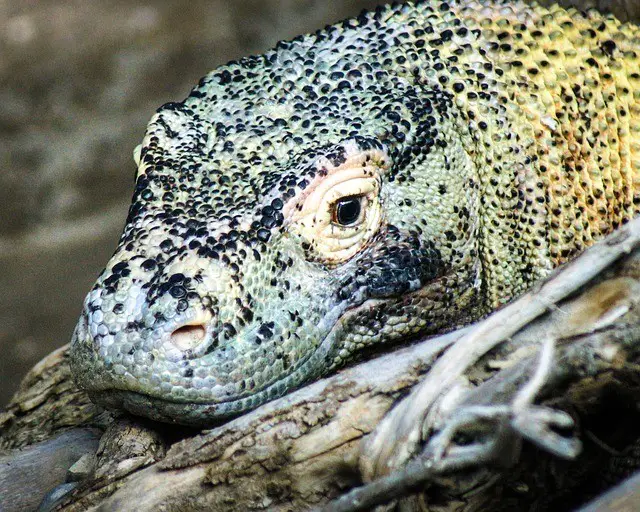Komodo dragons, scientifically known as Varanus komodoensis, are renowned for being the largest living species of lizard on Earth. These formidable reptiles can reach lengths of up to 3 meters (about 10 feet) and weigh over 70 kilograms (approximately 150 pounds). Native to a handful of Indonesian islands, including Komodo, Rinca, Flores, and Gili Motang, they thrive in the savannas, rainforests, and volcanic hills of this region.
Now let’s find out Is The Komodo Dragons Poisonous or Venomous?
Is The Komodo Dragons Poisonous
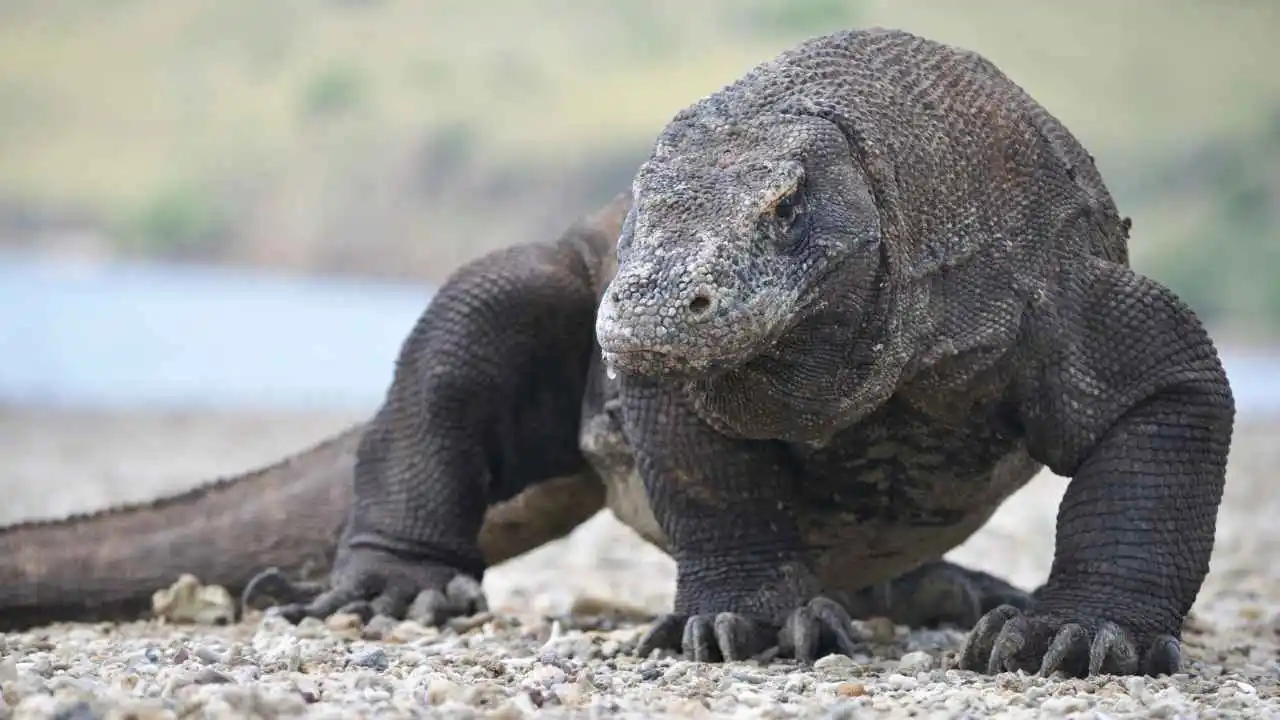
A prevalent misconception about Komodo dragons is that they are poisonous. However, this is a misunderstanding of their true biological nature. It’s crucial to clarify the difference between being venomous and poisonous. A venomous creature injects toxins into its prey or predator through a bite or sting, whereas a poisonous organism releases toxins when it is touched or consumed.
Komodo dragons are, in fact, venomous, not poisonous. They have specialized glands in their jaws that secrete venom, which they deliver to their prey through bites. This venom is a critical component of their hunting strategy, as it helps to debilitate and eventually subdue their prey.
The confusion often arises due to the way Komodo dragons have been portrayed historically. For many years, it was believed that the bacteria in their saliva were responsible for the debilitating effects on their prey. However, scientific research has since shown that it is their venom that plays a more significant role in this process. This distinction is important not only for accuracy but also for understanding the biological and ecological characteristics of these remarkable creatures.
Venom Research Findings
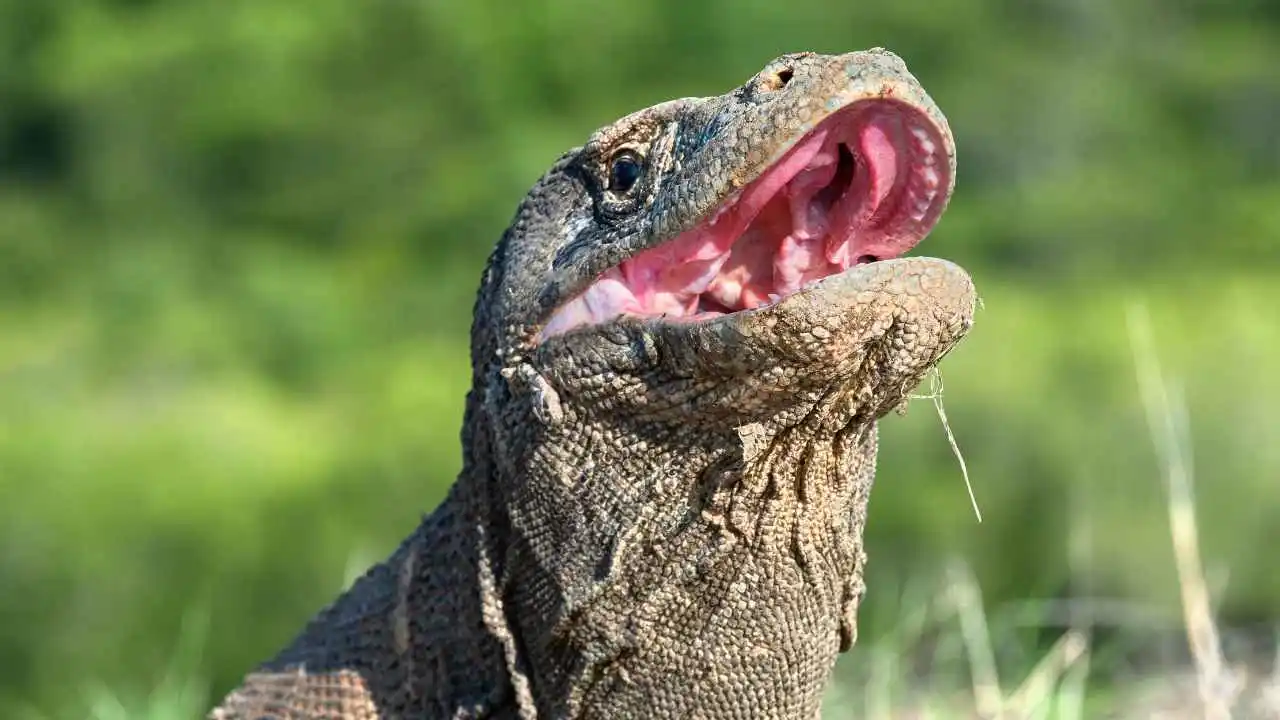
Recent scientific research has significantly advanced our understanding of Komodo dragons, revealing that these creatures possess venom glands. These findings have been pivotal in debunking the long-held belief that the lethality of a Komodo dragon’s bite was solely due to bacterial infection.
Studies, particularly those using MRI scans and gland biopsies, have identified complex venom glands in the lower jaws of Komodo dragons. When they bite, these glands secrete a venom that contains a mix of toxins, including anticoagulants and shock-inducing compounds. This venom rapidly decreases the blood pressure of their prey, induces shock, and prevents blood clotting, leading to a quicker demise.
The effects of this venom are not immediately fatal but work to weaken and slow down the prey, making it easier for the Komodo dragon to track and consume it. This method of hunting is particularly effective for an animal that relies on its physical strength and endurance to capture larger prey, such as deer and water buffalo.
Understanding the composition and impact of Komodo dragon venom has not only corrected misconceptions but also opened new avenues in research. Scientists are now exploring the potential medicinal applications of these toxins, such as developing new treatments for blood disorders and contributing to the broader field of toxinology. This research underscores the Komodo dragon’s unique place in the natural world and highlights the importance of preserving this species for future scientific discovery.
Bacterial Theory Debunked
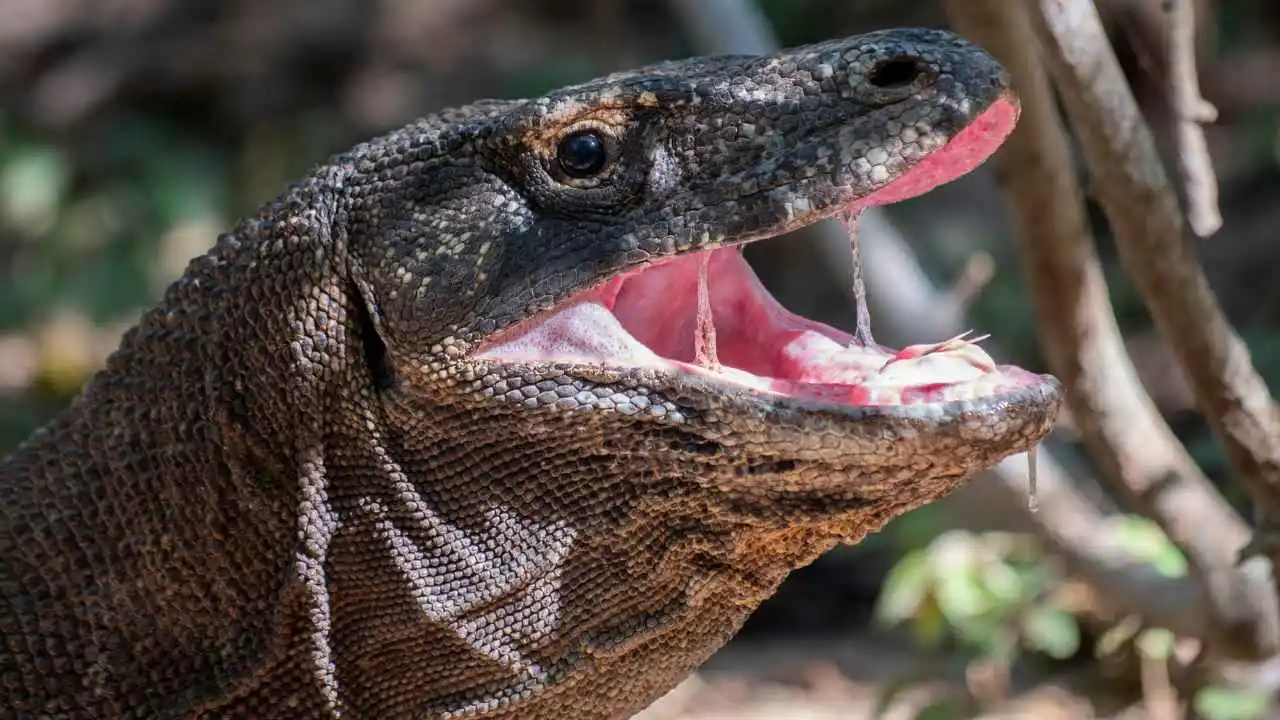
For many years, the prevailing belief was that the lethality of a Komodo dragon’s bite stemmed from a host of deadly bacteria present in its saliva. It was thought that these bacteria would infect a bitten prey, leading to a slow and inevitable death. This theory painted a picture of Komodo dragons as creatures relying on a septic bite, a strategy seemingly befitting their fearsome reputation.
However, recent scientific studies have significantly revised this view. Advanced research, including microbiological analyses, has shown that the bacteria in Komodo dragon saliva are not significantly more dangerous than those found in the mouths of many other carnivores. Moreover, the bacteria are not consistent enough in their composition or concentration to be reliably lethal to their prey.
The turning point in understanding came with the discovery of venom glands in Komodo dragons. This revelation shifted the focus from bacteria to venom in explaining the effectiveness of their bite. The venom, rather than bacteria, is now understood to be the primary factor in subduing and eventually killing their prey. This finding not only debunked the bacterial theory but also aligned the Komodo dragon with other known venomous reptiles, reshaping our understanding of their ecological role and evolutionary adaptations.
Hunting and Feeding Habits

The hunting and feeding habits of Komodo dragons are intricately linked to their venomous nature, showcasing a remarkable adaptation for survival. These giant lizards are ambush predators, relying on stealth and their powerful physique to capture prey, which includes large mammals like deer, pigs, and even water buffaloes.
When a Komodo dragon bites its prey, it delivers venom from its glands through grooves in its teeth into the wound. This venom is a potent cocktail of toxins that induces shock and blood loss in the prey. Unlike immediate-acting venom found in some snakes, the venom of a Komodo dragon works more slowly. It gradually weakens the prey by lowering blood pressure, inhibiting blood clotting, and causing muscle paralysis.
After the initial bite, if the prey doesn’t succumb immediately, the Komodo dragon will often follow it for hours or even days. The venom’s effects progressively debilitate the prey, making it unable to escape. Once the prey is weakened sufficiently or dies, the Komodo dragon consumes it, using its powerful jaws to tear flesh and crush bones. Remarkably, these dragons can eat up to 80% of their body weight in a single feeding session.
This method of hunting is not only efficient but also conserves energy for the Komodo dragon, which is crucial for a large predator that may not eat frequently. Understanding their hunting and feeding behavior is essential for appreciating how their venomous capability is perfectly adapted to their ecological niche. It also highlights the evolutionary success of Komodo dragons as apex predators in their habitat.
Conservation Status
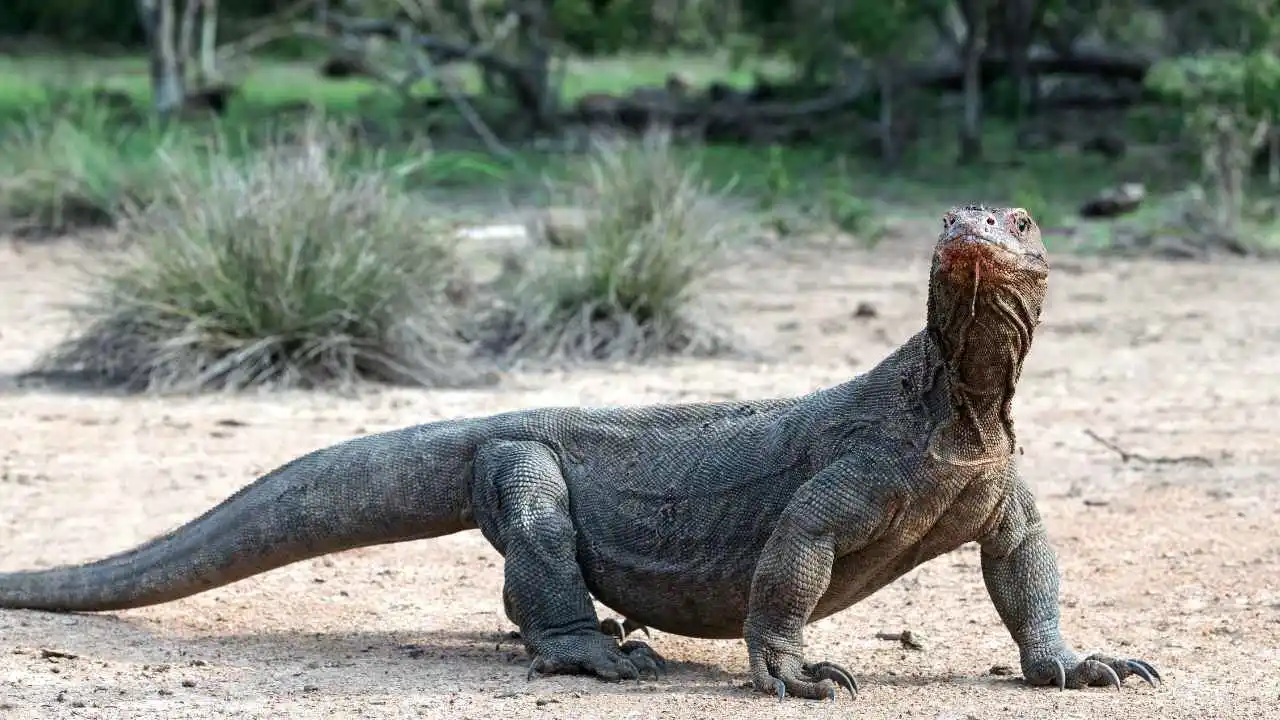
Komodo dragons are currently classified as a vulnerable species by the International Union for Conservation of Nature (IUCN). This status points to the increasing concerns over their survival in the wild, primarily due to habitat loss, human encroachment, and the impacts of climate change. The limited range of these creatures, confined to a few Indonesian islands, makes them particularly susceptible to environmental changes and human activities.
Understanding the biology and ecological role of Komodo dragons is crucial for effective conservation efforts. Knowledge about their venomous nature, hunting strategies, and habitat requirements is essential for developing targeted conservation strategies. This includes habitat preservation, breeding programs, and measures to mitigate human-wildlife conflicts.
Efforts are underway to protect their natural habitats and to ensure a sustainable coexistence with local communities. National parks and reserves, such as the Komodo National Park, play a vital role in these conservation efforts. These protected areas not only safeguard the dragons but also the rich biodiversity of the region.
Moreover, as apex predators, Komodo dragons are integral to the health of their ecosystems. Their role in controlling prey populations and influencing the food chain highlights the importance of their conservation for maintaining ecological balance.
Conclusion
In summary, Komodo dragons, the largest living lizards, are fascinating creatures that have captivated the interest of scientists and the public alike. Central to understanding these remarkable animals is the clarification that they are venomous, not poisonous. This distinction is crucial, as it underscores the method by which they incapacitate their prey – through venom delivered in a bite, rather than toxins released upon touch or consumption.
References and Further Reading
For those interested in delving deeper into the fascinating world of Komodo dragons and their venomous nature, the following resources provide credible and detailed information:
- National Geographic – Research Finds That Komodo Dragons Kill With Venom: This article discusses the discovery of venom glands in Komodo dragons and the implications for understanding their hunting methods. Read more.
- PMC – NCBI – Beware of the Dragon: A Case Report of a Komodo Dragon Attack: This scientific paper explores the medical implications of a Komodo dragon bite, including the role of bacteria and venom. Read more.
- PNAS – A central role for venom in predation by Varanus komodoensis (Komodo Dragon): This study published in the Proceedings of the National Academy of Sciences provides an in-depth analysis of the venom’s composition and its effects. Read more.
- FTLOScience – Komodo Dragons Are Cold-Blooded Killers With Venomous Proteins: This article offers insights into the unique proteins found in Komodo dragon venom and their potential applications in medical research. Read more.
- The Guardian – Komodo dragons use venom to kill their prey, scientists discover: This piece provides an overview of the discovery that Komodo dragons are venomous and discusses the significance of this finding. Read more.

